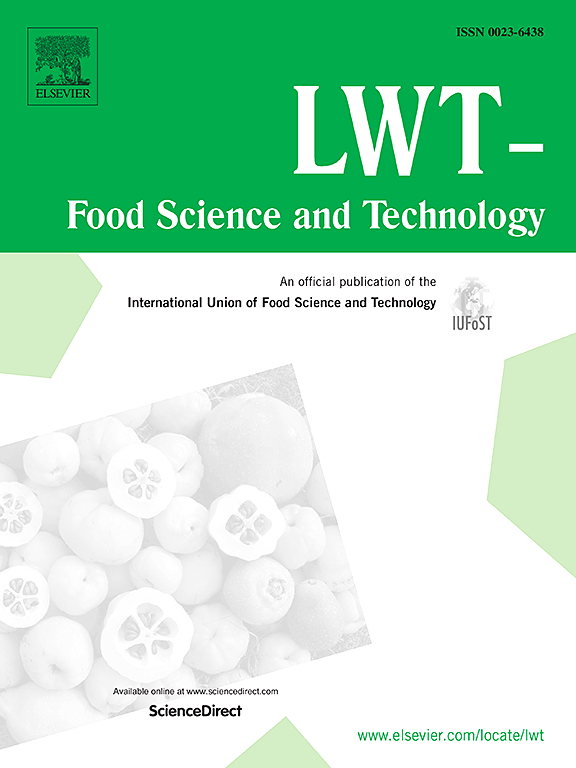Advanced authenticity screening of commercial berry seed oils using full FTIR spectra and DSC curves coupled with chemometrics
IF 6
1区 农林科学
Q1 FOOD SCIENCE & TECHNOLOGY
引用次数: 0
Abstract
The feasibility of Differential Scanning Calorimetry (DSC) and Fourier Transform Infrared (FTIR) spectroscopy coupled with Partial Least Square Discriminant Analysis (PLS-DA) for the authenticity screening of blackcurrant-, strawberry-, and raspberry seed oils was evaluated. Authentic DSC and FTIR fingerprints of berry seed oils were reported and used as training data, reflecting their natural variability. In DSC analysis, full curves of melting phase transition were utilised instead of individual DSC parameters (peak temperature, peak height, enthalpy). Each berry seed oil was characterised by distinctive endothermic and exothermic peaks. A FTIR model was built based on the absorbance intensity at three spectral ranges of 3550–3200 cm−1, 3010–2854 cm−1, and 1720–720 cm−1. With supervised learning and personalised data processing, the classification performance of both DSC and FTIR were improved. During external validation using commercial oils, the DSC models demonstrated good predictive performance in classifying blackcurrant and strawberry oils, while FTIR models were favoured for predicting the class of blackcurrant and raspberry oils. This work provides industry practitioners with practical insights into processing the thermal and spectral fingerprint data for the authenticity screening of berry seed oils.
本研究评估了差示扫描量热法(DSC)和傅立叶变换红外光谱法(FTIR)与偏最小二乘法判别分析法(PLS-DA)结合用于筛选黑加仑、草莓和覆盆子籽油真伪的可行性。报告了浆果籽油的真实 DSC 和傅立叶变换红外指纹图谱,并将其用作训练数据,以反映其自然变异性。在 DSC 分析中,使用的是熔化相变的完整曲线,而不是单个 DSC 参数(峰值温度、峰高、焓)。每种浆果籽油都有明显的内热峰和放热峰。根据 3550-3200 cm-1、3010-2854 cm-1 和 1720-720 cm-1 三个光谱范围的吸光强度,建立了傅立叶变换红外光谱模型。通过监督学习和个性化数据处理,DSC 和 FTIR 的分类性能都得到了提高。在使用商品油进行外部验证时,DSC 模型在黑加仑油和草莓油的分类中表现出了良好的预测性能,而 FTIR 模型在预测黑加仑油和覆盆子油的类别时更受青睐。这项工作为行业从业人员提供了处理热指纹和光谱指纹数据以筛选浆果籽油真伪的实用见解。
本文章由计算机程序翻译,如有差异,请以英文原文为准。
求助全文
约1分钟内获得全文
求助全文
来源期刊

LWT - Food Science and Technology
工程技术-食品科技
CiteScore
11.80
自引率
6.70%
发文量
1724
审稿时长
65 days
期刊介绍:
LWT - Food Science and Technology is an international journal that publishes innovative papers in the fields of food chemistry, biochemistry, microbiology, technology and nutrition. The work described should be innovative either in the approach or in the methods used. The significance of the results either for the science community or for the food industry must also be specified. Contributions written in English are welcomed in the form of review articles, short reviews, research papers, and research notes. Papers featuring animal trials and cell cultures are outside the scope of the journal and will not be considered for publication.
 求助内容:
求助内容: 应助结果提醒方式:
应助结果提醒方式:


